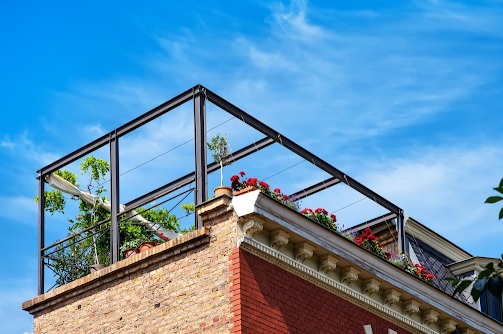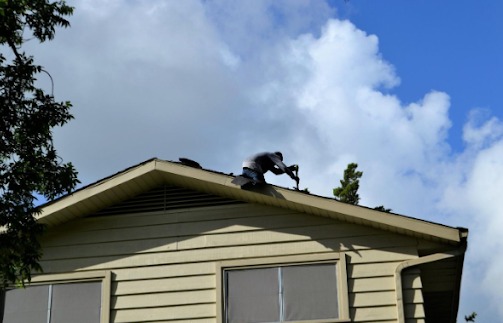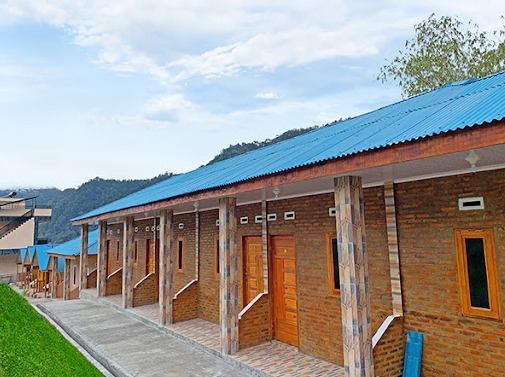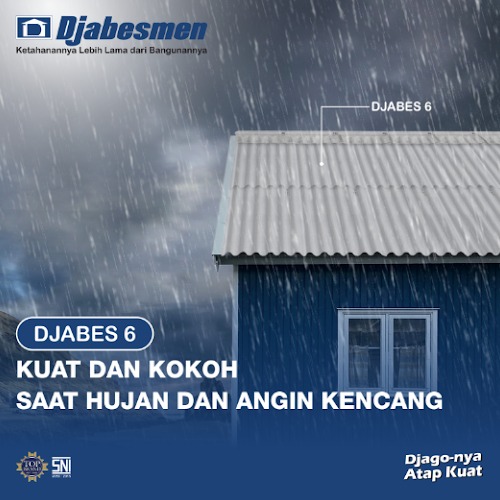Roof Safety Tips: Steps to Prevent Accidents and Fires

Roof fires are one of the types of accidents that can seriously threaten your home’s safety and security. Therefore, applying appropriate roof safety tips as a preventive measure is crucial.
With the right solutions, you can detect and prevent roof fires before the flames grow or spread to other areas. So, find out what effective safety methods you can implement.
Causes of Roof Accidents and Fires
First, it is essential to understand the factors that cause roof fires to apply the right roof safety tips. Roof fires in homes can occur due to several common characteristics, including the following.
- Incorrect Roof Insulation Installation
Insulation is a layer of material installed beneath or on top of the roof structure to reduce heat transfer between the interior and exterior of the building. However, improperly installed insulation can pose a potential fire hazard.
For instance, roof insulation applied near electrical connections or too close to HVAC (Heating Ventilating Air Conditioning) ducts can be more susceptible to catching fire.
- Faulty HVAC System
HVAC (Heating Ventilating Air Conditioning) is an air conditioning system comprising a heater, ventilation or air circulation, and a cooling unit. If exposed to high temperatures, this system can be prone to causing fires.
- Lightning Strikes
Although relatively rare, natural phenomena like lightning can cause fires. Since it occurs naturally, the appropriate roof safety tip for this factor is implementing measures such as using lightning rods.
- Short Circuit Due to Damaged Electrical Components
Cables and other electrical components located in the roof area can cause accidents or fires if they experience a short circuit or other issues. Therefore, it is crucial to conduct regular inspections.
- Dirty Roof
Over time, roofs can become filled with materials such as branches, dry leaves, or other debris accumulating on their surface. If not cleaned, these branches and dry leaves can become more susceptible to catching fire and spreading to other roof parts.
- Roofing Material
Certain materials, such as thatched roofs, wood, and straw, are more prone to catching fire when exposed to flames. Therefore, avoid using these roofing materials if you live in dry climate areas susceptible to fire outbreaks.
Fire Safety Tips to Prevent Accidents from Fires
You can identify the appropriate solutions to keep the roof safe from fire risk based on the abovementioned factors. As alternatives, here are some fire safety tips that you can implement.
- Regularly Check the Insulation
If you have installed insulation on the roof, inspect it regularly. Also, ensure the insulation is not too close to heat sources or electrical devices that can cause excessive heat or fire.
- Clean the Roof Regularly
Another roof safety tip is to ensure you regularly clean the roof surface from debris and trash, such as dry leaves, tree branches, plastic, or other materials prone to catching fire.
- Check Cables and Other Electrical Components
Short circuits in cables and electrical components are a common cause of fires on roofs or in attics. Therefore, always make sure to inspect your electrical system installation.
Ensure that there are no broken, exposed, or damaged cables, as they are one of the primary triggers of fires due to short circuits. If you notice any faulty wires, replace them or perform repairs immediately.
- Install Fire Detection Equipment
Installing specialized installations such as a fire detection system is one of the practical roof safety tips. This system can provide early warnings if there are any signs of a fire, such as smoke.
- Install Automatic Fire Extinguishers
In addition to a fire detection system, you can install automatic fire extinguishers if necessary. One example is sprinklers, a spraying device that can release water automatically when it detects smoke.
Furthermore, make sure to have manual fire extinguishers (Portable Fire Extinguishers) on standby as a precautionary measure to extinguish fires that may go undetected by the automatic fire extinguishing system in your home or building.
- Install Lightning Protection System
During bad weather, lightning can strike the house’s roof unexpectedly, potentially causing a fire. Installing a lightning protection system is the best safety tip to prevent lightning strikes.
The lightning protection system works to direct the lightning current safely to the ground, reducing the risk of fire and other damages. However, ensure that professional experts carry out the installation process following the applicable safety standards.
- Use Fire-Resistant Roofing Materials
The final tip is to remember to use roofing materials that are structurally strong, heat-resistant, and not easily flammable when exposed to fire. For example, roofs made of metal, concrete, clay tiles, or fiber cement materials.
Best Roofing Material Recommendations to Prevent Fires
One of the vital roof safety tips to prevent accidents due to fires is to use fire-resistant roofing materials. Here are some of the best options:
- Metal Roofing
Metal is known as one of the fire-resistant and non-flammable roofing materials. Examples include aluminum, zinc, steel, copper, or roofs made from alloys of multiple metals. However, metal roofs are more susceptible to corrosion when exposed to harsh weather conditions such as rain and humidity. Additionally, while they can withstand fire, metal roofs tend to conduct heat and make the interior of the building feel hot.
- Clay Tiles
Clay tiles are known for being fire-resistant and able to dissipate heat, making them cooler than metal materials. However, they have a heavier structure, are more brittle, and are prone to breakage compared to other roofing materials.
- Concrete
Like clay tiles, concrete is also fire-resistant and heat-resistant and has a heavy structure but is generally more robust. However, concrete can only be applied to flat roofs, and the installation cost tends to be higher.
- Fiberglass (Glass Fiber)
This type of roof is made from fiberglass or glass fiber reinforced with polymer resin. It is known for being lightweight and highly weather-resistant. However, its fire resistance is not as good as other materials.
- Asphalt Shingles
Asphalt or bitumen roofing, commonly known as bitumen tiles in Indonesia, is known for its durability, longevity, and fire resistance. However, this material is susceptible to scratches and can make the interior of the building hotter, similar to metal roofs.
- Fiber Cement
The last alternative is fiber cement roofing, a combination of glass fiber, polyester fiber, and other synthetic materials. This material has high fire and weather resistance and is lightweight, robust, affordable, and environmentally friendly.
So, apply the roof safety tips above to prevent accidents and fires in your building or home. You can also get the best fiber cement roofing materials from Djabesmen to prevent fires.

Djabesmen Regains Top Brand No.1 Award for the Tenth Time
Djabesmen Won Top Brand Award
Read Post arrow_right_alt

Tips for Creating a Rooftop Garden
Planning to create a rooftop garden? Discover these valuable tips to elevate its charm and allure!
Read Post arrow_right_alt

Roof Repair Solutions for Urgent Situations
Here are some tips and emergency roof repair techniques that you can implement in critical conditions.
Read Post arrow_right_alt

Here are the Reasons Why Roofs Are Made with Corrugations
Why are roofs made with corrugations? Learn about its rationale and various benefits!
Read Post arrow_right_alt












